Sherman Gets a Pacemaker at CUVS
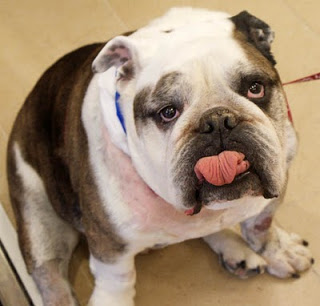
Sherman Tank is an 8-year-old, 66-pound male bulldog who was brought into CUVS in need of help. Sherman needed a pacemaker. Sherman’s owners brought him to their family veterinarian for an exam after noticing that sometimes he lacked his usual energy and was reluctant to climb stairs. Sherman’s veterinarian performed an electrocardiogram (diagnostic tool that measures the electrical activity of the heart) and found that Sherman had 3rd degree atrioventricular block with a ventricular escape rhythm. In layman’s terms, this diagnosis means the normal electrical impulse which stimulates the heart to contract is blocked. Fortunately, the muscular portion of the heart has a back-up system which allows it to continue to beat in the absence of a normal electrical impulse. Unfortunately, this back-up system often fails over time, despite various medical therapies. Previous veterinary studies have shown that dogs such as Sherman may experience episodes of collapse or even pass away suddenly at home. Sherman was then referred by his family veterinarian to Cornell University Veterinary Specialists to see our cardiologist, Dr. Mandi Kleman, for an evaluation for a pacemaker.
Upon examining Sherman, Dr. Kleman found Sherman to be bradycardic (possessing a heart rate that is too slow), consistent with his previous exam. In preparation for potential pacemaker implantation, she obtained a repeat ECG, an echocardiogram (an ultrasound of the heart), bloodwork, and a urinalysis. The ECG confirmed the continued presence of the 3rd degree AV block and the echocardiogram showed mild volume overload of the left heart. After discussing the plan at length with the owners, Dr. Kleman scheduled a pacemaker implantation procedure for the following day.
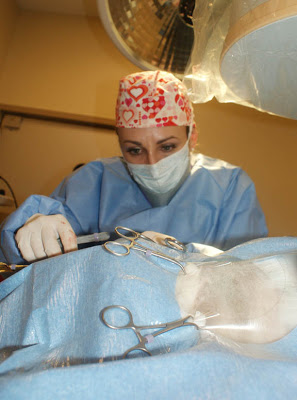
Sherman stayed at CUVS overnight for monitoring and at noon the following day, Dr. Kleman prepared and scrubbed for the surgery. During a short 90-minute procedure, Dr. Kleman implanted a Medtronic pacemaker device into Sherman’s heart via two small incisions in his neck. The surgery was a complete success with no complications. The pacemaker was ideally working to control Sherman’s electrical heart rhythm. Sherman recovered in ICU overnight with attentive pain management and monitoring.
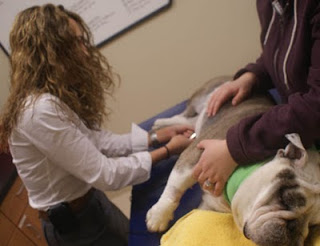
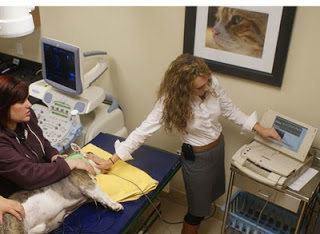
The morning after the procedure, the pacemaker was functioning properly, Sherman was energetic, and he ate a can of dog food for breakfast. That day, Dr. Kleman performed a chest x-ray, another ECG, and programmed the pacemaker to optimize the settings. To program the pacemaker, Dr. Kleman uses a specialized computer to evaluate the pacemaker’s function and if necessary, to adjust the settings of the pacemaker. Sherman was prescribed oral antibiotics and a mild tranquilizer to keep him calm and to allow him to heal properly. He was discharged to his owners at 4PM that day with a normal heart rate and a short little wagging tail.
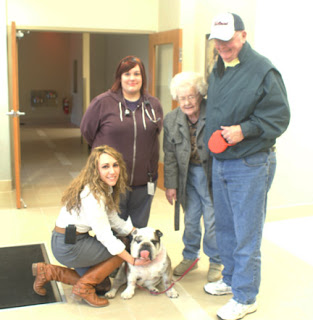
– Dr. Mandi Kleman, DVM, DACVIM (Cardiology)
– Stephanie Phillips, BA, A.A.S, LVT
Learn more about pacemakers by clicking here.

Add new comment